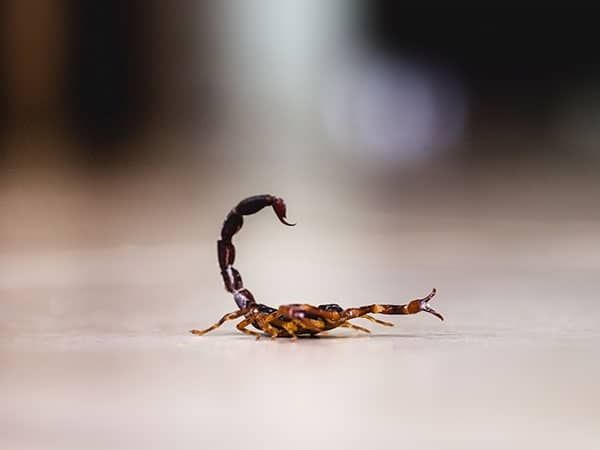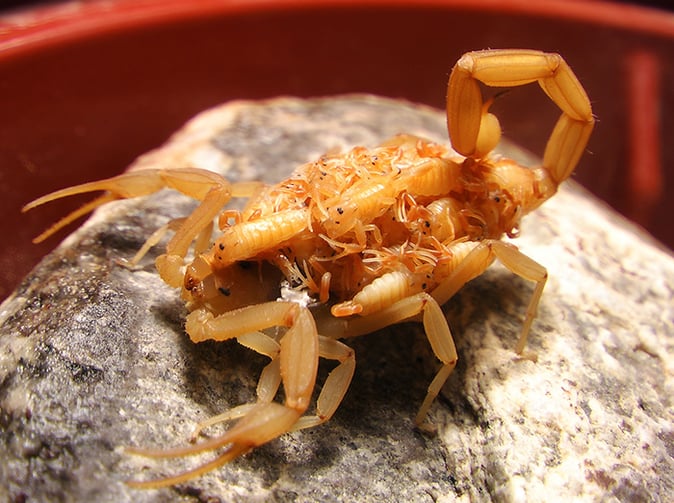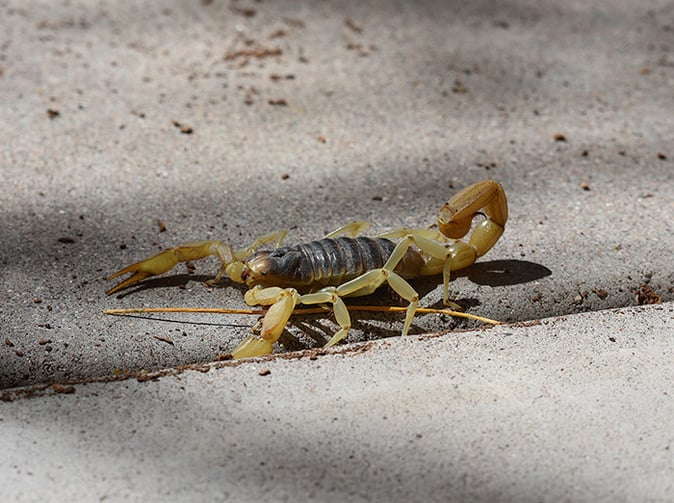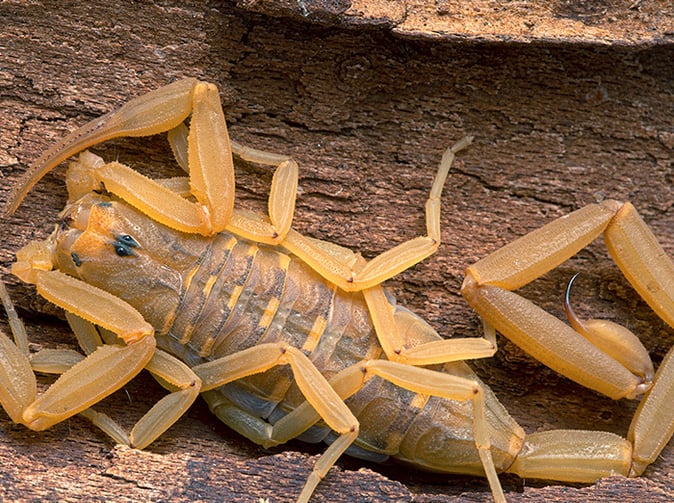
Scorpions are a common pest in the American Southwest, which is home to 60 diverse species. These venomous arachnids have some frightening features. They can strike in seconds and sting multiple times, and the venom, depending on the species, can cause a painful or deadly reaction.
When are scorpions most active?
Scorpion Identification
Bark scorpions are just 1 to 3 inches long, so they might not look as frightening as desert hairy scorpions, which are much larger. Bark scorpions are brown, so they blend in well with their desert habitat as well as the trees and vertical surfaces that they climb. Unlike other species, bark scorpions are social. You may see groups congregating in infested areas. Female scorpions will carry several dozen babies on their backs. Immature scorpions are cream colored and develop orange legs as they mature.
Scorpions have a distinctive appearance. Like other arachnids, they have four pairs of legs. They also have an additional set of well-developed pincers that look like crab claws. These appendages are used to catch and hold prey. The scorpion's most famous feature is the segmented tail. The stinger is located at the tip. The entire tail curves up over the scorpion's body when it strikes. Nonvenomous arachnids, such as pseudoscorpions, wind scorpions and sun spiders, are sometimes confused with true scorpions.
Deadly Scorpion Stings
The bark scorpion is the most deadly species in the United States. It's found in California, Nevada, Utah, New Mexico and Arizona. Most scorpion stings cause localized pain, swelling and numbness. However, bark scorpion venom may affect the central nervous system and cause muscle spasms, double vision and breathing difficulties. Children, seniors and allergic individuals experience the worst reactions and should be treated with anti-venom.
According to the U.S. National Library of Medicine, scorpions cause more deaths than any other animal except snakes. It's wise to call the poison control hotline for assistance following a sting although medical care is not usually required. If necessary, operators can direct you to a hospital that stocks an antidote.
Scorpion Control
Scorpions are most active on warm summer nights. They have poor sight, so they interpret vibrations. It's difficult to see scorpions in the dark. Homeowners can use black lights because these arachnids glow brightly under UV rays. This makes it easier to identify and catch individuals that are normally camouflaged. Additionally, scorpions can be controlled with regular pesticide applications, as well as exclusion techniques. Since the scorpion is a predator, it does not have a high reproductive rate and therefore catching and removing them will also, over time, collapse populations.
A pest control professional can also advise you on ways to make your property less welcoming to pests. These may include trimming trees and vegetation, removing wood piles, monitoring potted plants and weather sealing your home.
Testimonials

Request Your FREE Estimate
Have questions or need help getting rid of scorpions or other pests? Simply complete the form below or give us a call!



